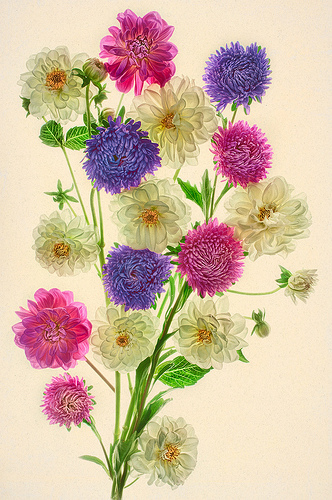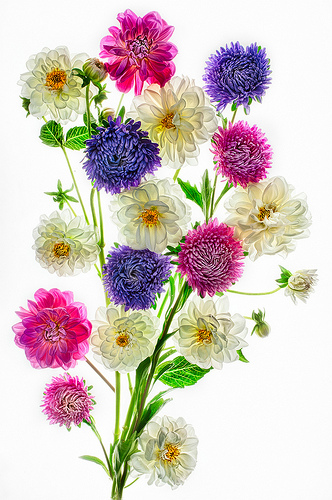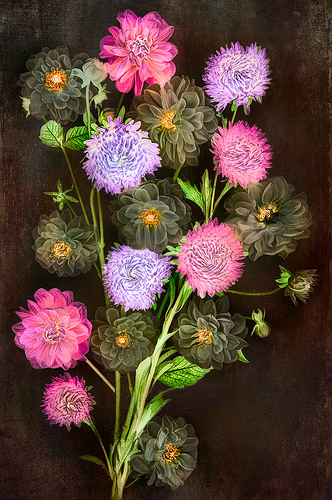Shopping for groceries at Berkeley Bowl the other day I came across these dahlias and asters that called out for photography. Taking the flowers home, I shot them on a light box (this version with a white background is second from the top) using eight exposures. Click here for more about this technique. To see a larger version of any of the images below, just click the image.

To finish the image and relieve the starkness of the white background I virtually “placed” the image of dahlias and asters on a paper scan and added a texture to warm the image (above, top version).

Next, I used a LAB color inversion to create a composition on a black background (bottom version). Since my idea was to create a painting on canvas with this version of When Dahlias Dream, I worked to add a textural feeling to the background.
As noted in Photographing Flowers, dahlias and asters are part of the same flower family. In particular, dahlias are named for Dr. Anders Dahl, a Swedish botanist who worked with Linnaeus and first classified this genus. Originally native to the new world, dahlias were a show plant for the Victorians because of their over-the-top visual attractiveness.
Click here for more of my dahlia photos.
